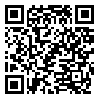Volume 65, Issue 3 (2 2007)
Tehran Univ Med J 2007, 65(3): 45-49 |
Back to browse issues page
Download citation:
BibTeX | RIS | EndNote | Medlars | ProCite | Reference Manager | RefWorks
Send citation to:



BibTeX | RIS | EndNote | Medlars | ProCite | Reference Manager | RefWorks
Send citation to:
Behjati Ardakani S, Nikkhah A, Sedaghat M. Risk factors of kernicterus a study in 312 icteric neonates. Tehran Univ Med J 2007; 65 (3) :45-49
URL: http://tumj.tums.ac.ir/article-1-817-en.html
URL: http://tumj.tums.ac.ir/article-1-817-en.html
Abstract: (16420 Views)
Background: Kernicterus, also known as bilirubin encephalopathy, is a neurologic syndrome resulting from the deposition of unconjugated bilirubin in the basal ganglia and brainstem nuclei. Indirect bilirubin is toxic for brain. Neurologic dysfunction (BIND) that include acute phase (hyperbilirubin encephalopathy) and chronic phase (Kernicterus) resulting from hyperbilirubinemia and disruption of blood brain barrier. In this study, the association between bilirubin encephalopathy and risk factors was evaluated.
Methods: In this retrospective study, 312 icteric neonates were admitted in the neonatal ward of Children's Hospital, Medical Center, Tehran, and 305 of these cases were evaluated. Patient histories were taken and physical examinations were performed. For each patient, the age, sex, birth weight, time of discharge from the hospital and risk factors were recorded, and a questionnaire was completed.
Results: In this study, of the 305 icteric neonates evaluated, 25 cases had kernicterus. Risk factors included acidosis, prematurity, hemolysis, hypoglycemia, sepsis, respiratory distress, low birth weight, ABO incompatibility and G6PD deficiency. The mean level of bilirubin in cases of kernicterus was 32 mg/dl and in the others was 20 mg/dl (p=0.001). Kernicterus was most common among high risk neonates (p<0.001). Birth weight less than 2,500 gm was also an important factor (p=0.04).
Conclusion: High-risk neonates need prompt treatment for hyperbilirubinemia compared to low risk neonates.
Methods: In this retrospective study, 312 icteric neonates were admitted in the neonatal ward of Children's Hospital, Medical Center, Tehran, and 305 of these cases were evaluated. Patient histories were taken and physical examinations were performed. For each patient, the age, sex, birth weight, time of discharge from the hospital and risk factors were recorded, and a questionnaire was completed.
Results: In this study, of the 305 icteric neonates evaluated, 25 cases had kernicterus. Risk factors included acidosis, prematurity, hemolysis, hypoglycemia, sepsis, respiratory distress, low birth weight, ABO incompatibility and G6PD deficiency. The mean level of bilirubin in cases of kernicterus was 32 mg/dl and in the others was 20 mg/dl (p=0.001). Kernicterus was most common among high risk neonates (p<0.001). Birth weight less than 2,500 gm was also an important factor (p=0.04).
Conclusion: High-risk neonates need prompt treatment for hyperbilirubinemia compared to low risk neonates.
| Rights and permissions | |
 |
This work is licensed under a Creative Commons Attribution-NonCommercial 4.0 International License. |





